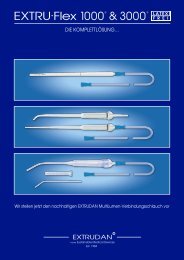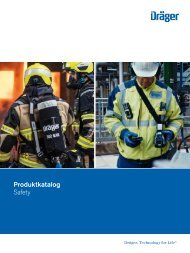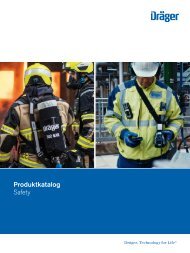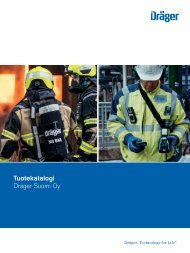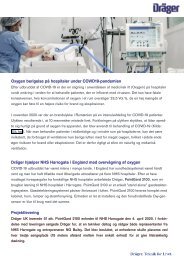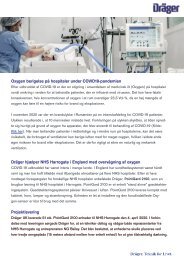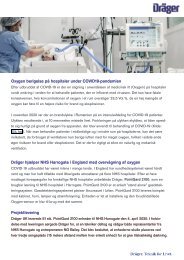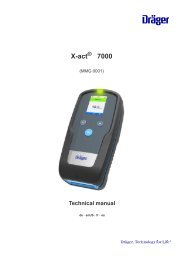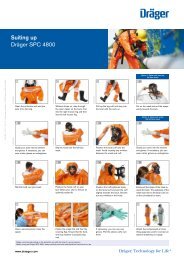Create successful ePaper yourself
Turn your PDF publications into a flip-book with our unique Google optimized e-Paper software.
58| Dräger-<strong>Tubes</strong> & CMS-<strong>Handbook</strong><br />
2.14 Expiration Date, Storage, and Disposal of<br />
Dräger-<strong>Tubes</strong><br />
Each Dräger-Tube contains a reagent system designed to undergo a chemical reaction with<br />
a particular substance. Since chemicals and chemical reagents are not stable indefinitely,<br />
each box of Dräger-<strong>Tubes</strong> is stamped with an expiration date. The tubes are suitable for<br />
use through the last day of the month of expiration. <strong>Tubes</strong> used beyond the expiration date<br />
cannot be relied upon to give accurate results.<br />
A<br />
For the accuracy of the tube indication, throughout the shelf life, Dräger-<strong>Tubes</strong> should be<br />
stored in the original package at room temperature. A note on the package indicates<br />
a maximum storage temperature of 25 °C (i. e. 77 °F). Avoid excessively low (less than<br />
35 °F) or high (greater than 77 °F) temperatures during storage and do not subject the<br />
tubes to light for prolonged periods.<br />
Do not dispose of used or expired Dräger-<strong>Tubes</strong> in domestic waste. Dräger-<strong>Tubes</strong> must be<br />
disposed of properly, since the reagent system of the tube contains chemicals, even though<br />
the chemicals are present in extremely small amounts. The storage or disposal of<br />
chemicals must be conducted according to local, state and federal regulations. Detector<br />
tubes are comprised primarily of glass and chemicals. Keep detector <strong>Tubes</strong> and all<br />
chemicals out of the reach of Children.<br />
2.15 Dräger-Sampling-Systems<br />
Monitoring hazardous substances in the air by means of measurements often requires a<br />
considerable expenditure with regard to the instrumentation and personnel. This is<br />
particularly true when the measurements are done on site and there is no direct reading<br />
Dräger-Tube available for the particular application. Under these conditions, a sample must<br />
be taken using a suitable collection device and sent to a laboratory for analysis.<br />
Analytical<br />
Laboratory<br />
D-1228-2009<br />
Sampling Sampling record Analysis Analysis result<br />
Air investigations at the workplace by sampling on site followed by laboratory analysis.




